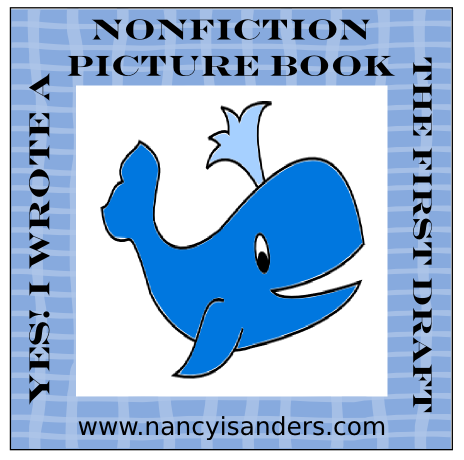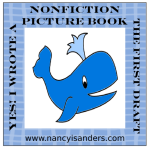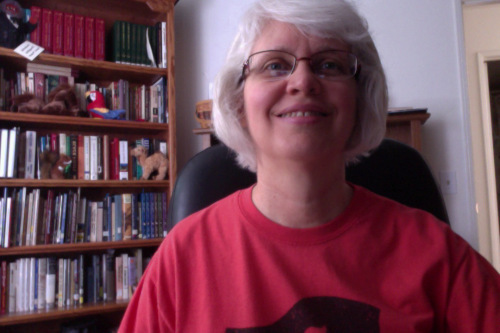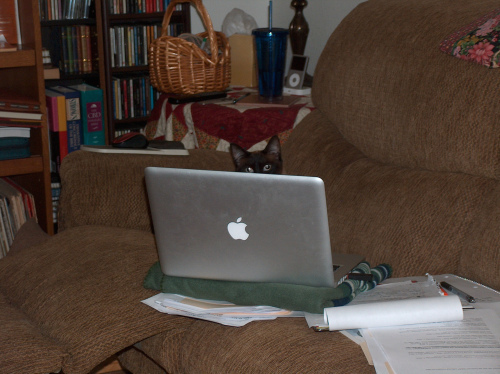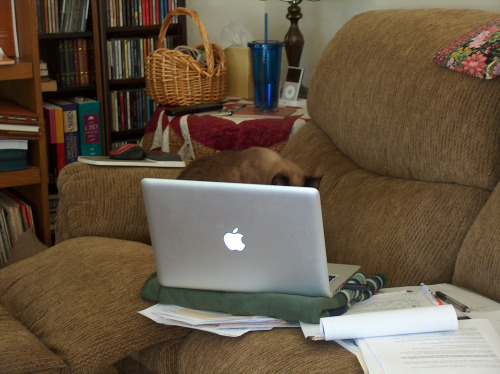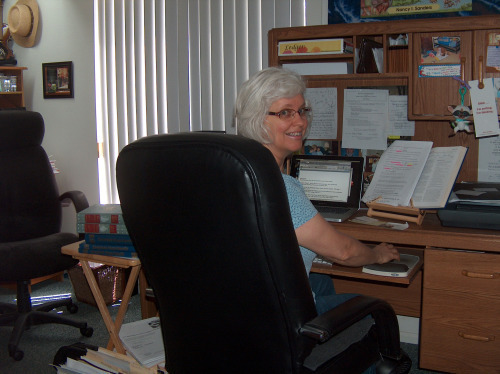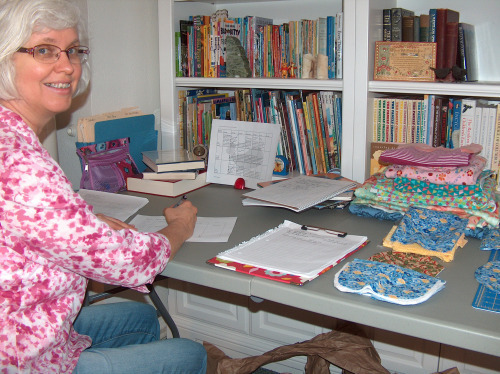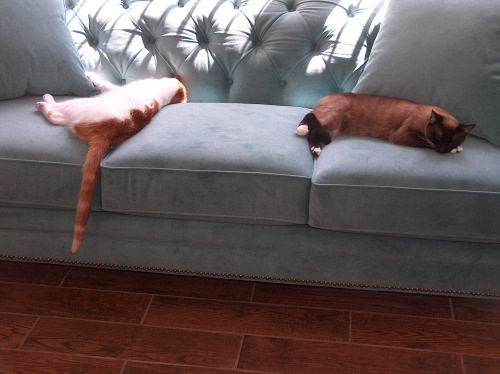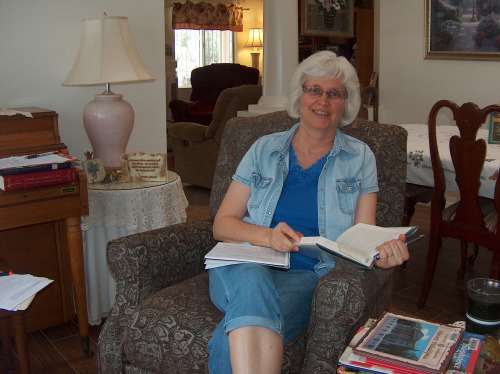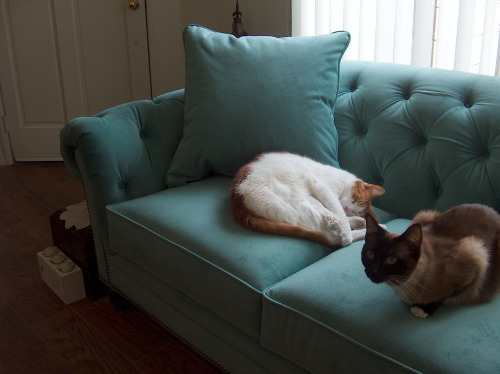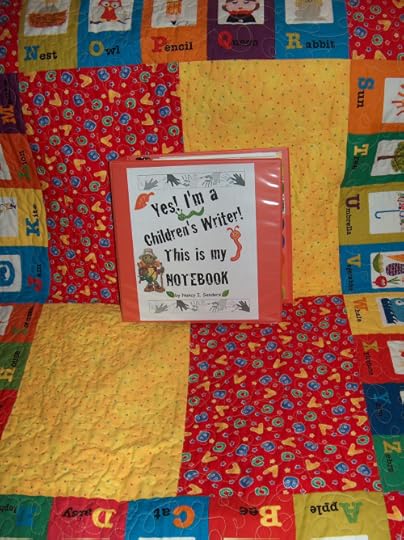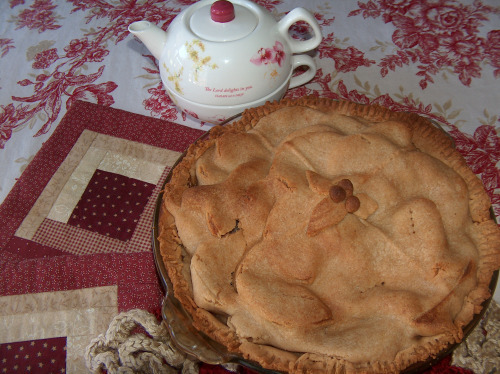Nancy I. Sanders's Blog, page 59
May 19, 2014
Nonfiction Picture Book in One Week: Hip Hip Hooray!
Wow…what a journey this has been…it’s hard to believe we started out last November in 2013 to learn how to write the first draft of a nonfiction picture book. First we went through the step-by-step process over about three months (if you subtract time off for the holidays). Then we upped our pace and tried it in three weeks. And most recently, we really sped up the process and I showed you how to write the first draft of a nonfiction picture book in just one week.
Hip hip hooray for each and every one of you who actually wrote a nonfiction picture book during all this time. And some of you have been working on more than one, ’cause you’ve been writing to tell me so. Good for you!
So, once again, I wanted to offer you a fun little picture you can post on your website or blog, or just print out and hang if your office if you want! Just as a way to validate all the hard work (and hopefully fun!) you’ve been having in our journey together.
Here it is, nice and big if you want to save it and print it out:
And here it is as a cute little thumbnail if you want to save it and put it on your website or blog:
So…what’s next?
Well, a couple of things.
First of all, I wanted to let you know I’ll be working on creating three e-books:
Writing a Nonfiction Picture Book in 3 Months
Writing a Nonfiction Picture Book in 3 Weeks
Writing a Nonfiction Picture Book in 1 Week
When I have those ready for you to download, I’ll let you know. I’m going to offer them for free here on my site so you won’t have to be going back and wading through all the blog posts to find all the info you want.
And secondly, as I mentioned in my last post, I’m going to walk you through the editing process I take to polish my nonfiction picture book manuscript until it’s the best I know how to make it at this point in my career.
Many times, people ask me for writing tips and strategies on specific SKILLS of writing for children.
So now’s the time. So roll up your sleeves and get out your editor’s hat. Bring along the manuscript you just wrote or grab another nonfiction picture book manuscript that you’ve been working on. Because we’re going to have some fun learning great skills we can use to improve our writing craft. Right here. On my blog.
See you in the next post!


May 16, 2014
Nonfiction Picture Book in One Week: The Last Day
Wow, can you believe it?!!! Here we are at the last day of our challenge to write a nonfiction picture book from beginning to end in just one week! I’m here sitting in my office today working away on my laptop. You can see a lot of the research books I own on the bookshelves behind me.
When I wrote my picture book last week, I knew I wouldn’t be able to work on Friday because I already had an all day commitment. I’m sure some of you aren’t able to work on your manuscript straight through for 5 consecutive days as well. So I just worked on my Author’s Note from Thursday, Third Writing Session, off and on all weekend. Plus, over the weekend, I wrote the ending of my story (Friday’s First Writing Session) Then I got back to more of a writing schedule on Monday.
I worked on my Writing Sessions 2 and 3 from 11:10-3:00, with a short break for lunch in the middle.
So at the end of my last day of writing, here’s the state of my manuscript:
The first draft is finished from beginning to end.
It’s about 970 words right now.
Plus there’s the Author’s Note along with its footnotes.
The full bibliography is pretty much done. (Don’t you just love reaching the end of your first draft and the bibliography is up-to-date?!) I just need to make a “Selected Bibliography” to actually include in my book. To do this, I’ll make a second file and delete a bunch of the stuff that’s more for my own personal info and just include the major resources and/or student resources.
I’ve got 16 pages total with all my footnotes and all my sidebars.
Now, if I was on a super tight deadline, I’d just e-mail this puppy into the editor. They understand that this is the best someone can do on such a short deadline. I know it’s not “perfect” and they know it too. There would be some back and forth between the editor and me to help improve it and get it in better shape.
But I’m not on a deadline for this manuscript, and I don’t think you are either. So now I want to continue working on this manuscript and polish it until it shines. That’s what I’m going to do here on this blog in the next couple of weeks.
So if you want to follow along and polish your manuscript along with me, you can join in the fun! Or if you have another nonfiction picture book manuscript you want to work on, grab it and dust it off ’cause we’re going to really get our magnifying glasses out and look for any specks we can work on until it shines!


May 15, 2014
Nonfiction Picture Book in One Week: Thursday
When I took my break today, guess who I found working on my picture book when I came back to my laptop?!!! My writing buddy Pitterpat, lol!
As you can see by all the papers and notes I have at my side here on the couch where I’ve been working today, I’m digging into research…and you are too!
Here’s the basic schedule I followed on Day 4 of writing my nonfiction picture book in one week.
8:05: Worked on my First Writing Session according to the calendar we’re following right now.
9:45: Took a break for breakfast.
11:30 Continued on my first writing session. I was having a tough time getting the Middle: 2nd Half written. It seemed like every sentence I wanted to write required me to do some in-depth research. So I finally rearranged my rhythm and it really helped. Instead of researching for an hour and then writing, I researched for about 15 minutes, then wrote a sentence. That seemed to work much better. So my new rhythm for the day was:
research 15 minutes
write 1-2 sentences
research 15 minutes
write 1-2 sentences
and so on.
12:20: Took a break for lunch.
2:00 Continued in my new research/writing rhythm as I worked on my sidebars for my Second Writing Session.
4:00 Done for the day, but didn’t get to the Third Writing Session, so I just read the Author’s Note in my mentor text and planned to think about my Author’s Note until I get back to writing.
One of the things I’ve been doing all week and continued to do as I was thinking about my Author’s Note, was I’ve been carrying around a spiral notebook. As I do tasks such as the dishes or go somewhere in the car with my husband Jeff, I carry this notebook with me and jot down ideas as I go.
That’s because the bees in the beehive are busy working on my story even when I’m not. I’ll do something and suddenly an idea pops into my head like a tablespoon of honey from the beehive! I jot it down in my notebook so I won’t lose it.
Any time you’re working on a manuscript with such intensity as this, I recommend you carry around a notebook or scrap paper, too. You don’t want to lose any precious ideas!


May 14, 2014
Nonfiction Picture Book in One Week: Wednesday
How’s your nonfiction picture book journey going so far? As you can see from the photo above, I like to move around the house when I’m working long hours on a manuscript. This is a photo of my writing desk where I spend part of my time typing into my laptop. I have a “book chair” next to it that is so handy for propping up manuscripts or books to look at. Plus a tray to my left where I can stack research books I’m using.
Once again, here’s my hour by hour schedule just in case you’d like to see what I actually do all day long.
8:45 I worked on my First Writing Session of the day, following the calendar I provided for this project. This means I spend time editing what I’ve written so far, then read the turning point in my mentor text, and then spent time researching and digging up facts before I tried an attempt to write my turning point.
And this morning I felt like I discovered gold! I found a primary source I can use. Woohoo. Primary sources are so valuable because usually that means we can use them as our one stop source without having to look for 3 sources to back up each fact we state. This will make my job so much easier. I hope you find a primary source you can use, too.
9:40 Breakfast break
10:45 Time to start my Second Writing Session. Part of this included starting my sidebars. Since I’ve been adding my research resources as “footnotes” at the bottom of each page, I decided to plug in my sidebars as “endnotes” at the end of the manuscript. Within each endnote, I also pasted the bibliography to keep track of the source of each fact in my sidebars.
12:15 Lunch break.
1:00 Two of my precious writing friends arrived at my house for our weekly writer’s mini-retreat we’re doing together this spring. They worked on their historic fiction picture book while I worked on the Third Writing Session for my nonfiction picture book.
4:00 My friends headed home. I finished my Third Writing Session for the day.
5:00 Time for dinner again. Another full day. I am getting super-charged and mega-excited about this manuscript. It’s amazing how putting in solid hours of research equip us and empower us to write about a topic just 3 days earlier we knew nothing about.
And if you feel as if you’re drowning in research, keep reminding yourself that this is a picture book. 800 words is great, but if your mentor text is longer, you can go up to 1100 words or a little bit longer. That’s it! Really!
Focus on “story” instead of “facts” and it will make your journey a little bit easier and less-overwhelming regarding all the facts you’re digging up.
Think of it this way. You have a shovel and you’re digging for buried treasure. You are carrying a small leather sack and you have to fit the most valuable jewels in it. That’s your picture book. All the rest you can toss in a trunk and come back for later. That’s any future projects you might want to write with this research. Hope that helps!


May 13, 2014
Nonfiction Picture Book in One Week: Tuesday
Welcome back to the second day of writing a nonfiction picture book in one week. You can see me working at my research center that’s set up right next to a sewing project I’m working on.
Here’s the schedule I followed (using my calendar as a guide) to plug in three solid writing sessions throughout my day.
8:15 I typed up my bibliography, grabbing the stack of books I ordered in from the library on my topics, and typing in the info for each one. I listed the adult resources in my main bibliography and the children’s books in a separate group under “Student Resources.” Below both of these is a growing list of Internet resources I’m using.
8:30 I spent an hour researching. I didn’t need to type out my mentor text as it was a picture book I had already typed out word for word. As you research, keep reminding yourself that this is just a picture book, not a 10,000 word chapter book. This helps me not start to drown in research.
9:45: Breakfast break.
11:00 I plotted the chart of my mentor text and spent time editing my manuscript so far. Plus I did more research and plugged in the footnotes.
12:50 Break for lunch.
1:45 I wrote the first draft of my first half of the middle. Emphasis on FIRST DRAFT. Less than 200 words. Kind of scanty, but at least it’s down on paper so I have something to work with.
2:15 Research, research, research. Plus copying and pasting from my bibliography to plug in footnotes when I type these in.
3:15 Title tryouts to help me choose a working title I want to use.
3:20 I worked on my plot chart and the outline of my book to tweak it in spots where my research demanded it.
5:00 Time for dinner. Whew. Another full day under my belt.
And once again, my trusty writing buddies joined me for another day of hard work, as you can see in this photo below, lol. Hope your second day of writing is going well!


May 12, 2014
Nonfiction Picture Book in One Week: Monday
When I post things on my blog, I often work one week ahead. For example, I wrote my nonfiction picture book in one week LAST week. That’s so I could test the calendar and iron out all the glitches first. AND it’s so I could actually focus on writing a nonfiction picture book all in one week.
So now this week I’m going to post each day here on my blog to show you the steps to take as you follow along on my calendar to meet your goal of writing a nonfiction picture book in just 5 days.
Plus, as an added bonus, I’ll actually share the hour by hour schedule I kept. That’s because when I was teaching a couple of weeks ago at the Orange County Christian Writers Conference, a bunch of writers asked me what I actually do all day, hour by hour. So I thought I’d share this with you, too!
7:30 a.m.: I set up my research center.
8:10: I sat in my comfortable chair with a stack of research books and my spiral notebook to take down notes. Since I’d never researched my topic before, I was looking for a sweeping overview of my topic that I wanted to cover in the plot chart for my book from beginning to end. I started by reading briefly through my one big research book on my topic and then turned to the children’s books on my topic because those are the best sources to help determine key plot points and highlights of a topic.
As you can see by this photo below, my writing buddies (Sandman on the left and Pitterpat on the right) joined me on the couch to help me do my research…not!
9:00: After nearly an hour of research, I got out my blank plot chart and tried to fill in the 3 key changes plus what was going to happen in the beginning, the first half of the middle, the second half of the middle, and the end.
I still wasn’t too confident on my topic, but I tried to fill it in as best as I could.
When you’re working on a tight time frame, it’s all about making quick decisions. So go ahead and fill in the chart with ideas that come to you from the research you just did. This doesn’t have to be permanent. It’s just to get you pointed in the right direction.
By 9:30, my first writing session was done for the day. I was ready for breakfast. So I took a break. During my break, I kept my thoughts on my project. I still wasn’t sure about how to narrow my topic, so I thought about this.
Plus, so far on my plot sheet, I didn’t have a PROBLEM. All I had was a series of events. And a series of events isn’t a story. I needed some kind of a problem.
And I also didn’t have an idea for an ending in mind. I wanted an inspirational ending.
So as I took my break, my brain kept working. When you take your breaks this week, let your brain keep working, too. You’ll be surprised at the things that will pop up.
I call this the “bees in the beehive.” While you’re off doing other tasks such as cooking breakfast, the bees are still in their beehive working to make honey. And then suddenly, a new idea will pop into your head…it’s because those bees have been working all this time to give you something sweet for your story!
Sure enough, I was able to think of a historically accurate “problem” my main character could have. I planned to introduce this right in the beginning section of the book.
11:00: I started my second writing session. This time I spent my hour researching the Internet. I googled my topic and looked specifically for PRIMARY SOURCES. Primary sources are so essential because I can just quote one source without looking for 3 to back up a fact I state. I found diaries and maps. Plus, I looked in the back of my research books for their footnotes and endnotes and found primary sources they listed there, so I looked those up on the Internet and found some, too.
I started my bibliography early so I could keep track of the sources I found. Plus I printed out all this information and started a new file folder to keep my Internet research in.
Then I read my mentor text.
12:15: I created an outline of my nonfiction picture book using the handy chart I like to use.
The Beginning
The Middle
The End
1:00 Lunch break. During my lunch break I planned on how to do my research for my beginning. I knew this was coming up in the next session so I wanted to be prepared.
2:00 I read the beginning of my mentor text. Then I spent time researching.
3:00 I wrote the first draft of the beginning of my manuscript. No, it wasn’t perfect. But it was something. That’s all you need to get started.
4:15 Break
4:35-5:00 I added footnotes to what I just wrote so I wouldn’t forget where I had researched which fact I stated. I put these footnotes at the bottom of each page (not as endnotes…that would be my sidebars eventually).
Whew! It was a full day. But already I was feel equipped to write this book because I had spent so many hours in research. Yes, I felt overwhelmed with it all, but I also felt very excited.
I hope your day is very, very productive. And I hope that the research you do today helps you on your journey to write this book!


May 9, 2014
Nonfiction Picture Book in 1 Week: Prep
I’ve posted 2 calendars for you to print out and add to your Children’s Writer’s Notebook. One is a 1-week calendar that lists all the tasks we’ll be accomplishing each day. The second one is a blank 1-week calendar that you can use to rearrange these tasks to better fit your own personal schedule.
You’ll find both free calendars at the site of my writing buddies, Writing According to Humphrey and Friends.
Scroll down to the heading of CALENDARS.
Click on the links to print out
the 1-WEEK NONFICTION PICTURE BOOK CALENDAR
and the 1-WEEK BLANK CALENDAR.
Take a peek at the calendar and see if you have any questions about it. Let me know here in the comments if you do.
Basically, we’ll be having 3 main writing sessions throughout the day. I often write best in the morning, so I like to have my first writing session before breakfast. My second writing session is in between breakfast and lunch. My third writing session is between lunch and dinner.
Feel free to tweak these three writing sessions to fit your own personal writing rhythm.
One other tool I’ve found essential when working on a tight schedule like the one on this calendar is a kitchen timer. Sometimes it’s so easy to get lost in research or brainstorming ideas. If I find myself meandering through the process and starting to lag behind, I grab my kitchen timer and set it. This helps me focus and work more diligently at each different task in a more timely manner. On many many projects I don’t need to use a kitchen timer. But when I’m working on a tight deadline for a publisher or for projects such as this one, a kitchen timer helps keep me on the right pace.
And before we get started, I want to take a minute to talk about health. If you want to be a career writer, your health is very, very important. If you don’t take care of yourself, you can get eyestrain, carpel tunnel, backaches and other aches and pains. Here are some tips based on things I actually do to maintain my health when writing full-time.
1. Do as many tasks AWAY from the computer as possible. Read research books and take notes in a spiral notebook for 45 minutes, then spend 15 minutes typing in all your notes on your computer. Write the first draft of each section each day in your spiral notebook and then type it into your computer. Print out a hard copy of your manuscript to read and edit by hand, then type those into the computer. This reduces eye strain, wrist strain, and back strain.
2. Sit in different chairs and different places as much as possible. I like to spend an hour typing at my desk, an hour with my feet propped up on my couch typing on my laptop, an hour reading research books in my recliner, and an hour at my dining table organizing plot charts. Then I’ll repeat and move all these different places again. All this helps with back and leg strain.
3. Take frequent breaks. Brainstorming ideas? Wash the dishes or weed the garden with your notebook by your side. Did it take you an hour to type in your bibliography on the computer? Take a fifteen minute break and clean the bathroom with your spiral notebook at your side to write down ideas that you’re thinking about. I try to take 15 minutes breaks every hour or so and do tasks that get me bending and stretching. This helps a lot.
Okay, are you ready? I’ll see you here, bright and early on Monday morning. Let’s goooooo!


May 6, 2014
Nonfiction Picture Book in 1 Week: Prep
It’s exciting to hear from so many of you who are eager to try out this new adventure to write a nonfiction picture book from beginning to end, all in 1 week!
And if you can’t join in the fun, go ahead and follow along. Plan on a future date when you can clear your schedule and commit to this pace. Especially if you want to have a career as a children’s writer, this pace is required at times. (See this post.)
The key to remember is that this is the pace people keep with a full-time 9-5 job. This is the pace writers keep when we write full-time as well. This is the pace editors keep who have a full-time job.
So if you’re not in a place where you can spend the time committing to a full-time job next week, don’t feel bad! Whether you have a full-time job already or have small children at home or take care of aging parents…or whatever…you already have your hands full. Just choose the 3-month track for writing a nonfiction picture book in your spare time or the 3-week track if you can devote more time to it.
But for those of you who can commit to a full-time “job” next week, hop on board and join the fun! This will give you the confidence to try to land contracts with nonfiction picture book publishers so you can get paid to write nonfiction picture books.
Again, there is some prep involved.
1. Make a commitment to clear your schedule for next week. Pretend you got hired at the local temp agency to work full-time for one week. Schedule in 8 hours each day, Monday through Friday for next week. Plan on not answering any phone calls until you’re done with your writing tasks for the day (you can’t be on the phone during a regular job, right?) and plan on not answering any e-mails or interacting with social media posts except on breaks or after your writing day is done. (You can’t be doing personal e-mail or Internet activity during a regular job, either.) If it helps, get up and get dressed in business clothes (editors have to do this, you know) and then walk into your office and pretend you’re working all day at the office of a publishing house.
2. Get motivated. What has motivated me to work at this pace in the past? It’s usually money. Last time I got paid to write at this pace, the publisher paid me $1000 a week for 16 weeks. Now THAT was motivation. This time I won’t be working at this pace for the money, but I’m motivated to do this for 2 reasons: #1: I want to do this here on my blog with all of you. #2: I really want to get this idea onto paper and send it into my agent right away. Figure out what will motivate you to write your nonfiction picture book all in one week so you’ll stay committed to follow through.
3. Choose your mentor text and chart its plot. If you already did this for another picture book, go ahead and use the same one again if you like it. If you haven’t yet done this, CLICK HERE and follow the next 3 posts to learn how.
4. Choose your broad topic for your picture book. For example, I chose the broad topic of “How a famous landmark in American history was built.” I won’t tell you the exact landmark I’ll be writing about, but think something like the White House.
5. Gather in potential research books. I ordered in all the library books I could find about my particular landmark. I also have a lot of books in my personal research library in my house that have to deal with this topic. I’m gathering them all in a big stack. Go ahead and gather lots of potential books on your topic, too. Tons of kids books and adult books as well. There’s simply no way you can accomplish your goal of writing a nonfiction picture book in one week if you have to wait half the week for your library books to come in. Order them in today.


May 2, 2014
Nonfiction Picture Book: Self-Editing Tips
I know that many of us have finished our first draft of our nonfiction picture book that we’ve been working on these past 3 weeks.
And some of us have other first drafts of nonfiction picture books that we’ve been working on.
So if you haven’t yet downloaded my free rubric, NONFICTION PICTURE BOOK SELF-EDITING CHECKLIST to help you during the self-editing process, just click on the link to the site of my feline writing buddies, Writing According to Humphrey and Friends.
Scroll down until you see the RUBRICS TO HELP EVALUATE OR CRITIQUE MANUSCRIPTS OR PUBLISHED BOOKS.
Click on the NONFICTION PICTURE BOOK SELF-EDITING CHECKLIST.
Print it out and use it as a reference as you go over your first draft and polish it to be the best that you know how to do at this stage of your writing career.
And now, here’s a guest post from the top cat himself, Humphrey!
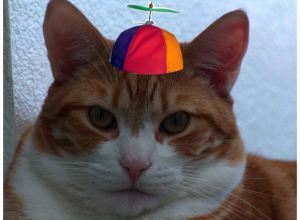
Hi My name is Humphrey. I’m a cat. You may already know that. But what you may not know is that I’m also a writer. And today, I want to tell you about putting on your editor’s hat.
Do you like to edit your own manuscripts? You know—self edit? Come on…really?
I don’t.
I mean, it’s just not the cat’s meow.
But I know I should. I know I’m supposed to. I know it’s what a cat’s gotta do to learn how to be a successful writer. So I decided to break my habit of neglecting this part of my writing life.
The first thing I did was get myself an editor’s hat. You know—first you wear the writer’s hat and then you take that off and put on your editor’s hat? Right? Well, I didn’t have an editor’s hat. So I went out and got one. Like it? It even has a little mouse at the top and this twirly thing to twirl around. It’s purrfect for a cat like me. You should get one, too!
After I finish my first draft of my manuscript, I set aside some time to edit. And now I make sure it isn’t the drudgery it used to be. I make sure it’s fun!
I put on my silly editor’s beanie. It gets me in the mood to have fun, dude. Then I get out my special highlighter pens. I splurged and bought some wa-ay cool ones that I can use to make neon colors and decorate all over my manuscript. (They don’t even have a cap to lose, but click like a ballpoint pen.) Since I have neon yellow and neon pink and neon orange, now I’m HOPING to find mistakes in my manuscript just so I can mark ‘em on my page and turn the boring black and white little marks on the paper into bright, fun, colorful pictures.
I know my weaknesses, too. So I made a list of ‘em. Here are the first three, for starters:
1. Don’t always use punctuation correctly.
2. Weak verbs.
3. Poorly constructed paragraphs without a clear beginning, middle, and end.
I also printed out some self-editing checklists from how-to-write books, and articles I found on the Internet. These lists remind me to check for realistic dialog, show don’t tell, and lots of other important stuff.
I take my highlighters and have some fun! First I look at every single sentence I wrote in my first paragraph. I highlight the capital letter at the beginning of the sentence in pink. I highlight the punctuation in that sentence in yellow. Then I make sure to check that I used that punctuation correctly.
If I’m not sure about the punctuation rule, I look it up in my reference books. But hey—my reference books aren’t bo-o-oring like yours might be. Oh no! First I made specially decorated book covers for each one of ‘em so they’re bright and colorful, not scary-looking or over-the-top academic. Then I got my highlighters out and really decorated the pages I use the most to remind me what the rules are that I most often forget. Plus, I got sticky notes in all shapes and sizes to stick on the pages I look up over and over again. I want to save my energy for chasing mice, not for flipping through the pages looking up the same rule I’ve used a zillion times before. Like I said—I want this self-editing thing to be as fun as a cat can have it.
So hey—how about you? Are you having fun when you self-edit your manuscript? If not, do something about it. Make it fun, like I did. Now editing’s my favorite part of writing. Not! But really, it’s way more fun than it used to be. Especially when I put on my editor’s hat. And nibble on tunafish…but that’s another story.


April 30, 2014
Writing a Nonfiction Picture Book in Just 1 Week
I want to give you a heads up today that in a week or so, we’ll be racing to the finish line and learning the pace it takes to write a nonfiction picture book in just one week.
“Are you crazy?” you might ask.
Well…maybe so…but then again, maybe not. Let’s just say I’m being realistic. If you want to earn income as a published writer and you want to write nonfiction picture books, sometimes you need to know how to write a nonfiction picture book in just one week.
For example, there is a nonfiction picture book publisher that I heard speak in a Webinar I watched this past year. This publisher said they are publishing 1000 nonfiction picture books this year.
Yep.
1000 nonfiction picture books.
That’s a lot of picture books and they’ll need a lot of authors to do that.
So after thinking about that, I decided I’d like to land a potential contract to write nonfiction picture books for this publisher.
I went to their website and found their submission guidelines. Basically, they wanted to see samples of my published books as well as my resume. So I sent those in.
I heard from the publisher this past week by e-mail saying that they received my package of samples.
So I e-mailed back and asked them a question.
How fast do they expect their writers to write a nonfiction picture book?
The editor was kind enough to respond and explain their process. Since many of their books are written in series, they assign the first book in a series with a deadline of one month. During that month, the editor gives feedback and guidance to the author.
Then after that, the rest of the nonfiction picture books in that series are due a week apart from each other. The entire series is usually given 3 months max for the whole series to be written.
So yes, if you want to earn income writing nonfiction picture books, some publishers expect a one-week deadline from their authors.
I wanted to share this with you so that you know why I’m going to show you how to write one of these puppies in just one week.
And to make it even more fun, I’m going to join right in on the adventure. I’m going to write about a topic I’ve not written about before, to make the challenge even more exciting!
I can hardly wait! I hope you’ll join in on the fun.


Nancy I. Sanders's Blog
- Nancy I. Sanders's profile
- 76 followers


